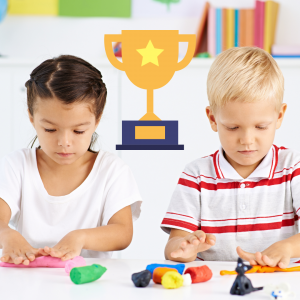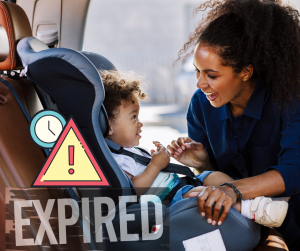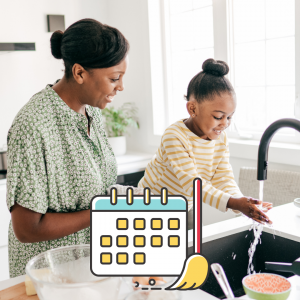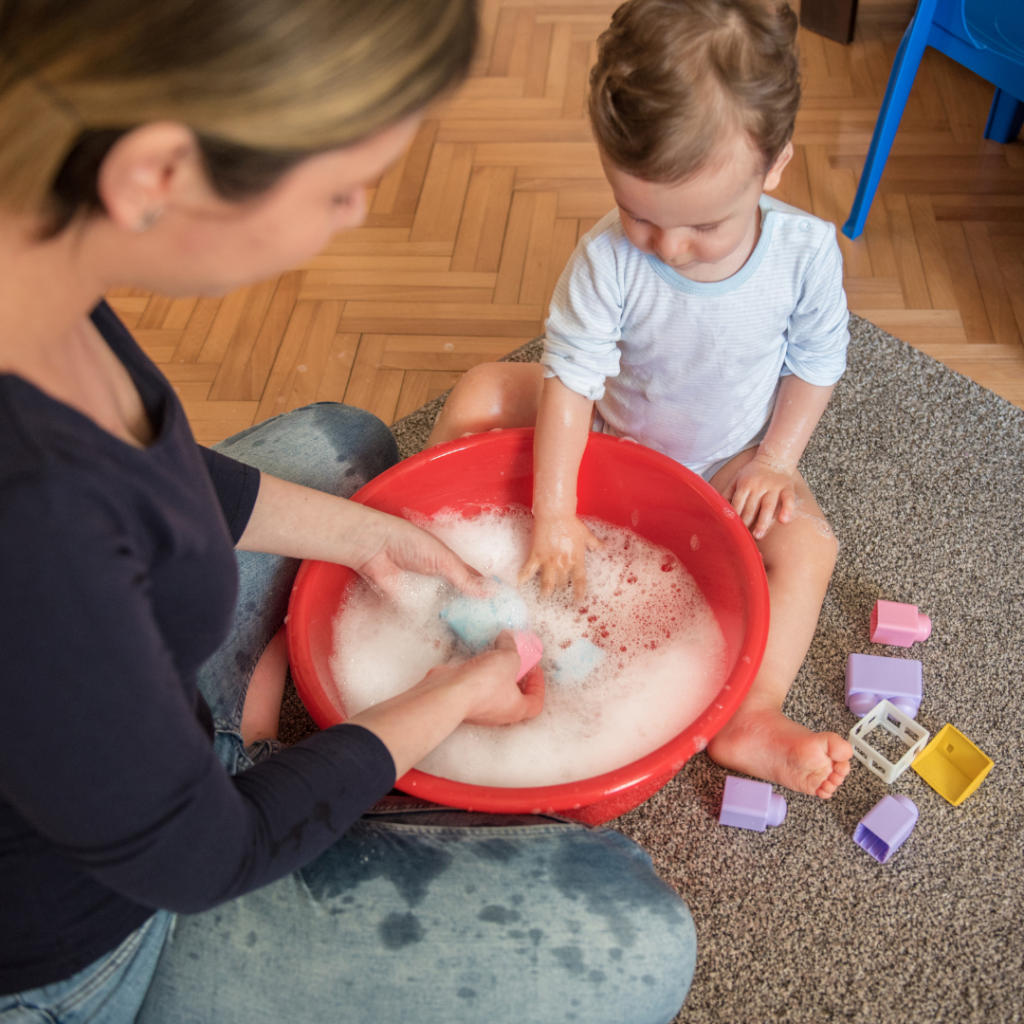
As a mom, I know firsthand that toys can be sources of germs and viruses.
I gathered all my toy cleaning techniques and put together this life-saver cleaning guide.
First, find out what type of toy you are trying to clean (plastic, wood, fur).
Second, why you want to clean the toy (remove stains, remove bacterias).
Keep on reading to know everything about cleaning toys!
Plastic, Rubber or Silicone Toys Without Batteries
Plastic, Rubber or Silicone Toys With Batteries
Stuffed Animals
Dolls and Plastic Toys with hair
Wood Toys
Outdoor Toys (bounce house, water slides, swings, playsets)
Plastic, Rubber or Silicone Toys Without Batteries
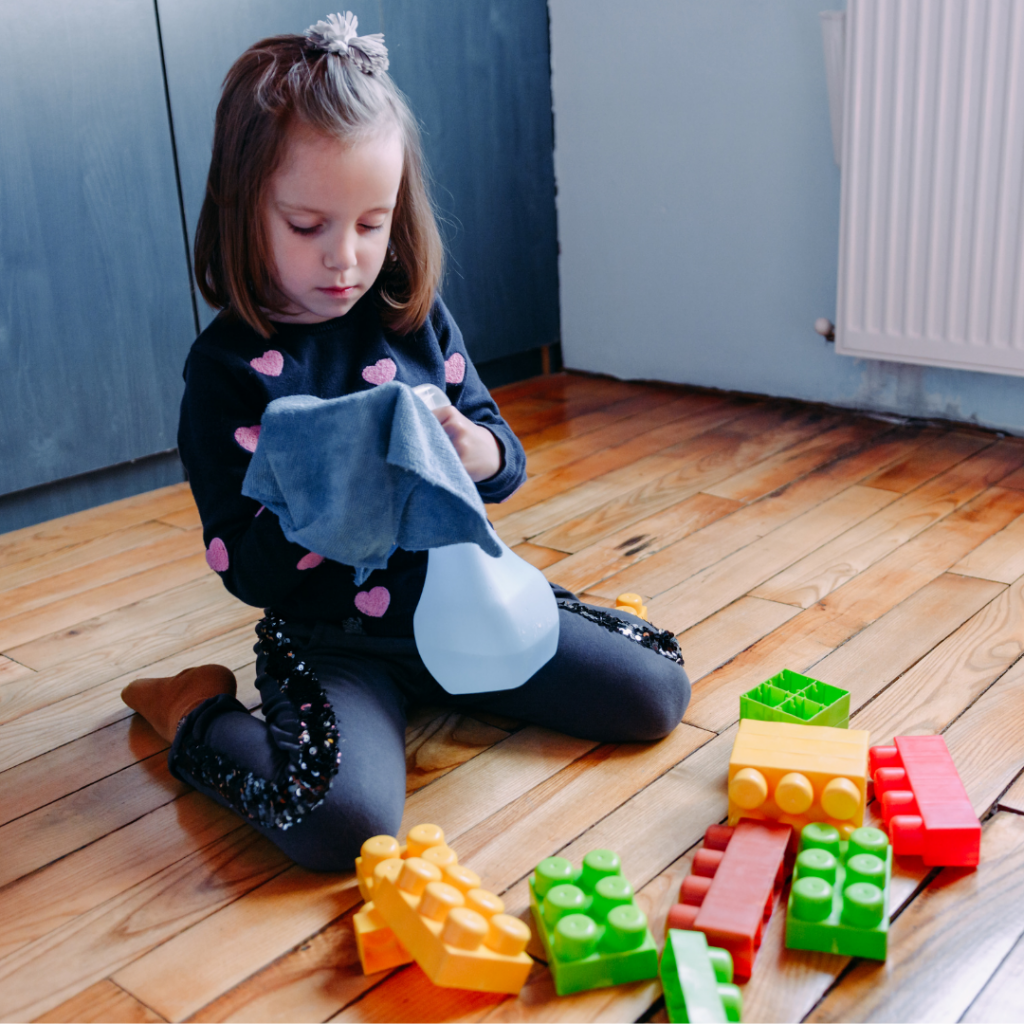
Everybody knows that you can clean these toys with soap and water, but is it really enough? The answer is YES, soap and water should be enough because it does the job to prevent and kill bacteria on toys.
You can also use the dishwasher, it will sanitize and clean toys the same way. Be careful it might melt your most fragile silicone rubber toys. I recommend putting it top rack because gets less heat since most heating elements are on the bottom
Toys with hard plastic such as lego, rattles, playmobil can go into the washing machine, but I prefer placing them inside a delicate bag. Kids’ bath toys should be cleaned regularly to prevent mold.
When infants are less than 2 years old, they tend to mouth most of their toys so I highly recommend using environmentally safe cleaners during this stage. Anything without free of phthalates, parabens, and with no dye. For mouthing toys and pacifiers I like to use food-grade sanitizers to ensure my babies are safe.
Methods of cleaning
- Soap and Water
- Dishwasher (top rack)
- Washing Machine (use delicate bag)
Plastic, Rubber or Silicone Toys With Batteries
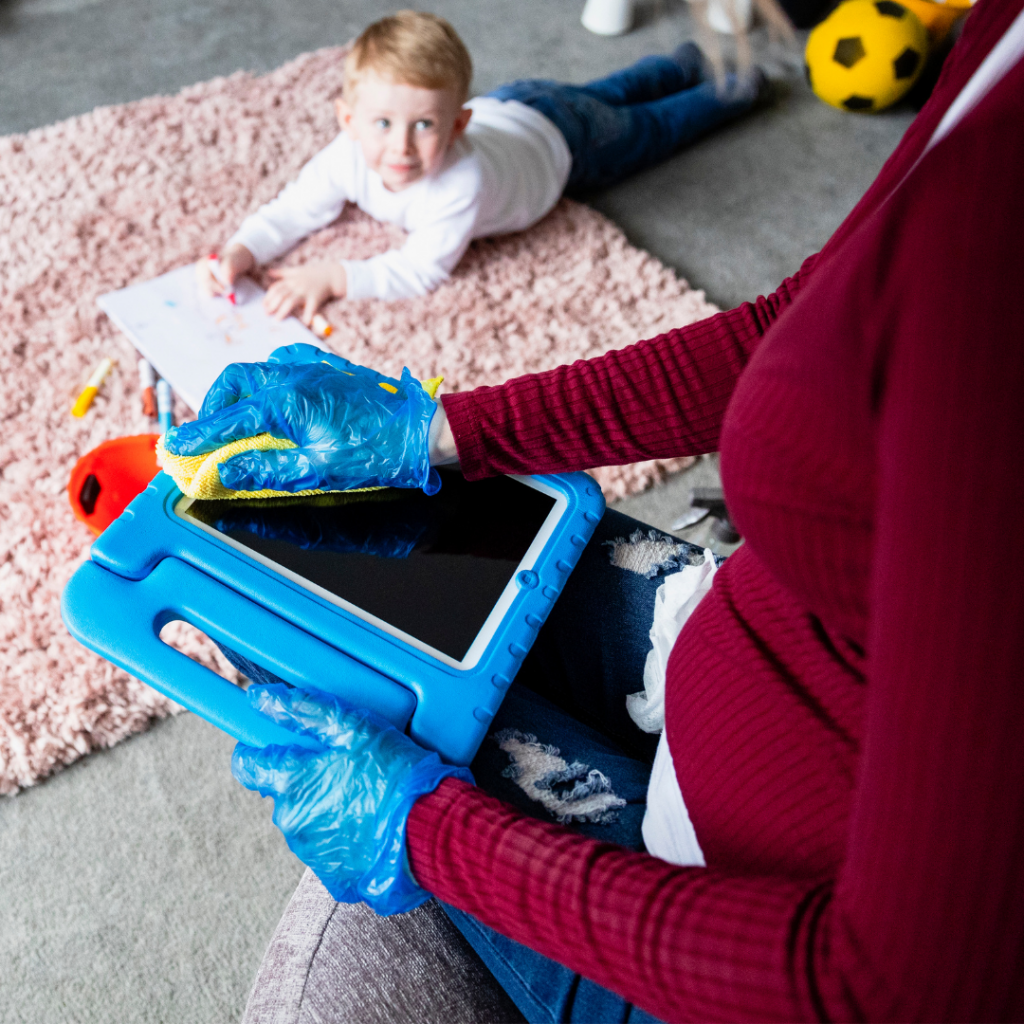
I don’t know about you, but I often think a certain toy is not electric and soak them in water. “Sorry kids mom is a hot mess!”.
The lesson is, never submerge or wash your toy using water and soap, your kid will not be happy afterward.
Any toy that has lights, music, talks, or does anything automatic is considered electric. If water or any liquid gets to the electrical parts of the toy it will probably stop working, needless to say, that it might cause an electric shock.
Wipes are my go-to when cleaning electric toys, but always take out the battery or unplug the toy. You can use rubbing alcohol too, just remember to keep a dry cloth handy if you applied too much alcohol. Then, let it air-dry for a couple of minutes before giving it back to your child.
Methods of Cleaning
- Wipes
- Alcohol (keep dry cloth close)
- Let it air dry (don’t put in the sun)
Stuffed Animals and Plush Toys
Stuffed Animals are part of our family so read this carefully so you don’t end up causing an accident!
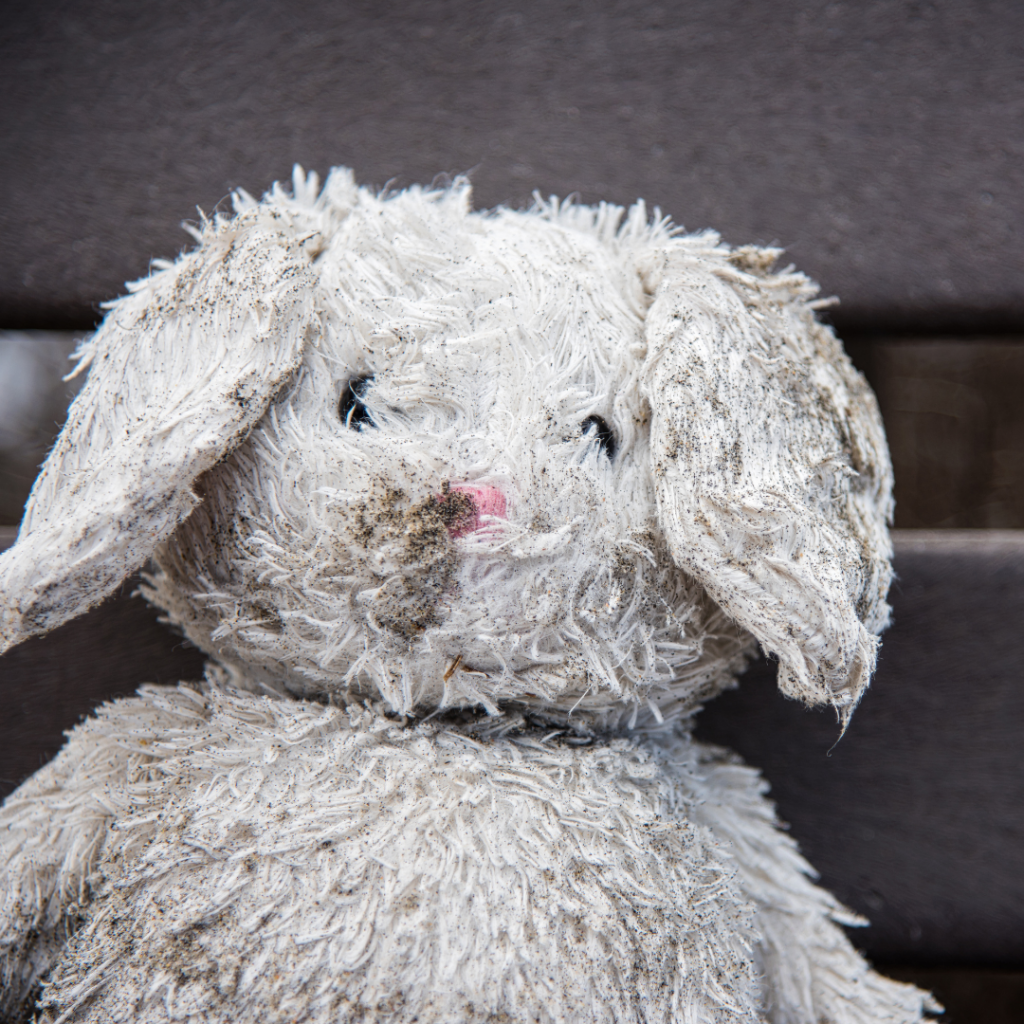
Never put stuffed animals straight into the washing machine, it will ruin them over time. My advice is to put them inside a pillowcase before going to the washer/dryer, this will protect his looks!
And if you really care about his looks, never spray a stuffed animal with a disinfectant because the spray could ruin the animal’s fur.
Companies like Teddy Needs a Bath have special pillowcases to wash the animal in the washing machine, but you can just use an old pillowcase at home if you want.
Sounds cliche but always read the labels, unfortunately some stuffed animals can’t be washed. Some labels won’t tell you how to wash them but at least will tell you the materials so you can Google that.
After you washed, make sure the animal is healthy (no loose strings, threads) because if your child sees them like that it might hurt them, or their feelings. If the animal don’t look presentable, groom their hair or fur.
Methods of Cleaning
- Washer/Dryer with a pillow case (delicate mode)
- Specific labels recommendation
Dolls and Plastic Toys with hair
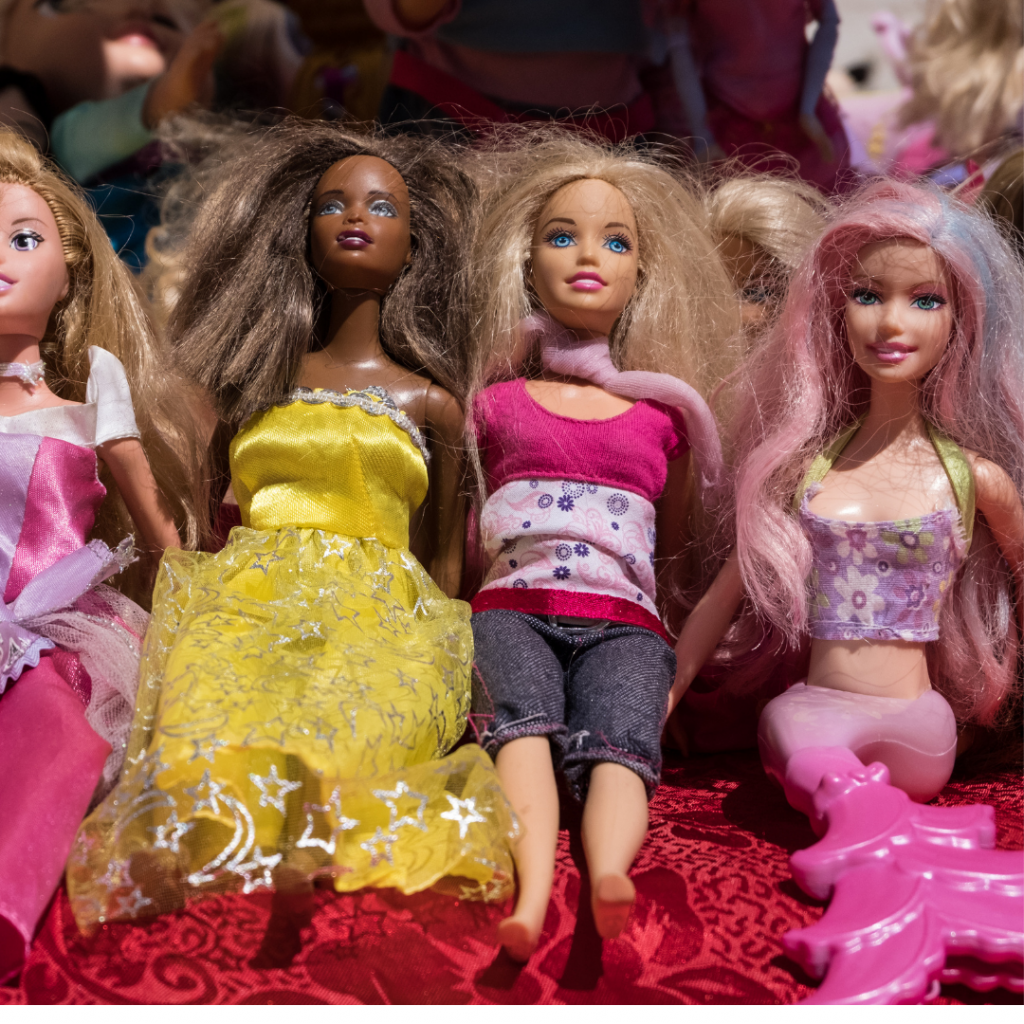
I always like to treat the doll’s hair as if it was human hair, but without the expensive conditioner part.
You can shampoo the hair with dish soap, if hair gets tangled or has knots, soak the hair overnight in a little conditioner and water. Seems funny but it works!
Always comb the hair after you wash it and then let it air dry or roll them in a towel. Never blow-dry the hair!
If the body of your doll has stains or marks we got you covered! Use 10% benzoyl peroxide gel (acne medication) and apply to the stains. Let it sit in the sun for a couple of hours then remove the gel by washing it off.
Methods of Cleaning
- Dish soap and water
- Conditioner and water mixture overnight (for tangled hair)
- 10% benzoyl peroxide gel (for stain in dolls body)
Wood Toys
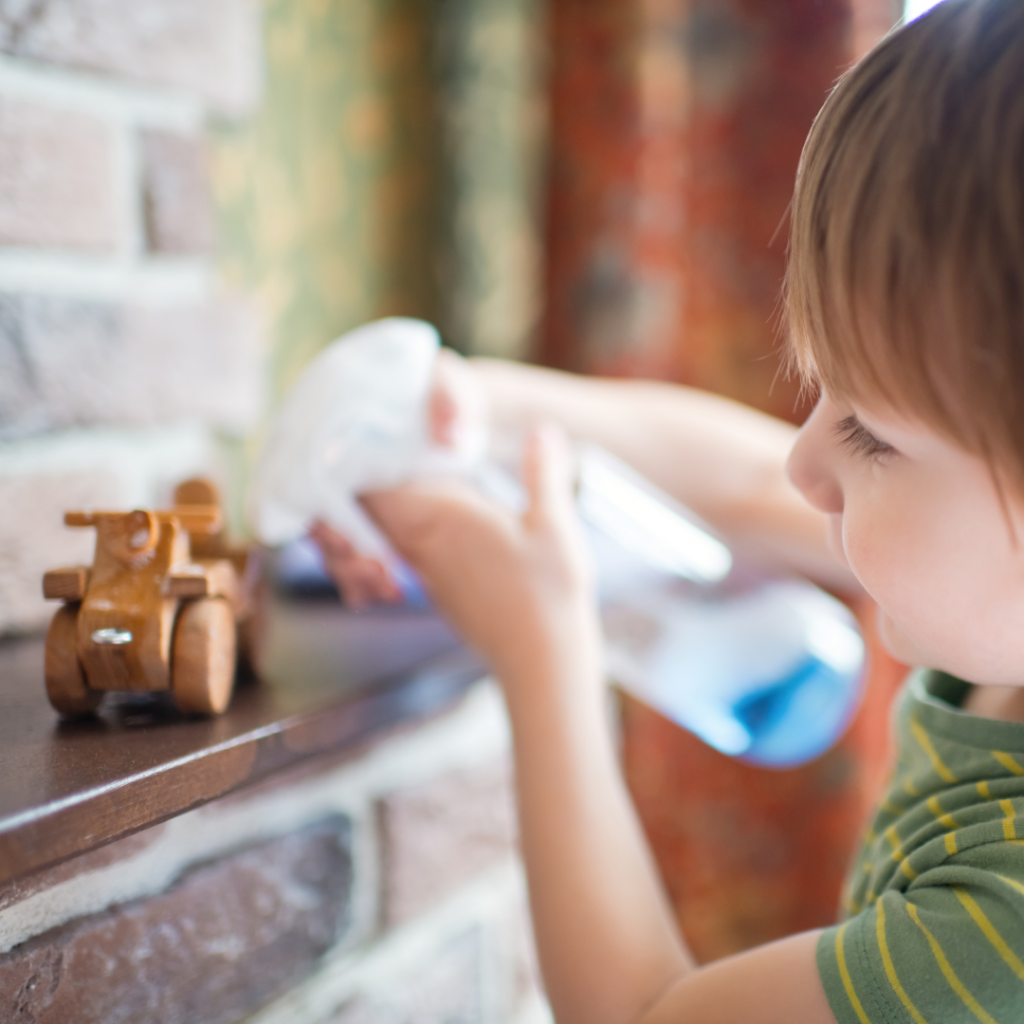
According to research, wood has an antibacterial effect and has a better hygienic performance than plastic.
So does that mean we shouldn’t worry? Nope! Moms are always concerned, especially when our kids’ health is in play.
Never soak or immerse a wooden toy, it might change its colors or shape. That happens because wood has absorbent properties.
Soak a cloth in white vinegar and wipe the toys down occasionally, I recommend doing this once a month. Vinegar will act as a disinfectant. Don’t worry, the smell will disappear in minutes after cleaning.
Usually, the older or frequently used wooden toys become rough and dried out. If that happens, use olive oil to moisture them.
For parents who want to be chemical-free, no worries here, vinegar and olive oil are natural already.
Methods of Cleaning
- White or apple cider vinegar (moist cloth)
- Olive oil if toy is dried out
Outdoor Toys (bounce house, water slides, swings, playsets)
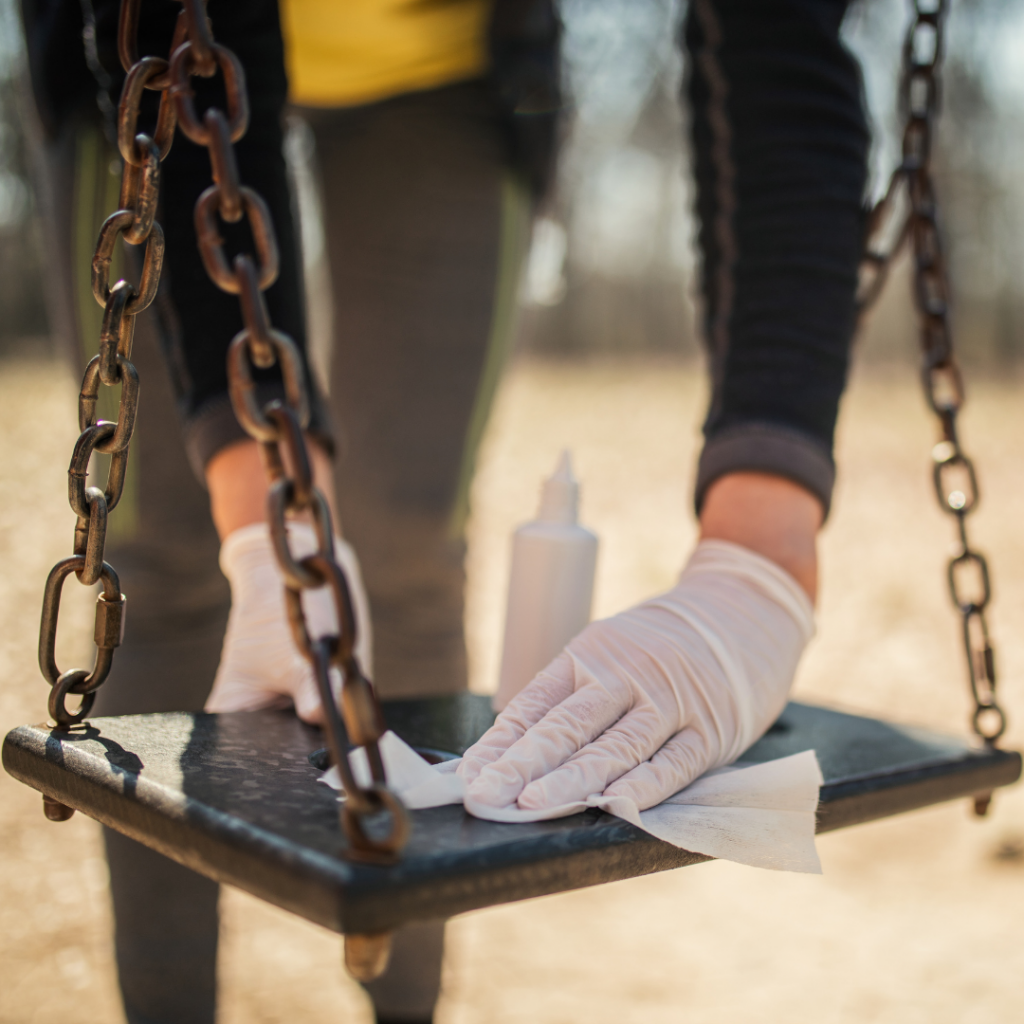
Toys like swings, playsets, and bounce houses are of either plastic, rubber, or foam. The cleaning process here is simple.
Just like washing a car, take the equipment outside, grab some dish soap, water, and a bucket of warm water.
Spray with the hose to get any food or dirt remaining. Then, use the soap and warm water to clean the toys. I always like using a brush to really clean it.
Never put away your outdoor toy without getting 100% dry. If there’s mold on your toys grab a mildew destroyer at your local Home Depot or Lowe’s and spray it all over to clean the mold.
Methods of Cleaning
- Warm water, soap, spraying hose
- Mildew destroyer (if there’s mold)
The Bottom Line
Always remember to clean toys at least once a month, how often you should clean will depend on your family and your concern about germs and viruses. For colder months clean the toys frequently (kids are sicker during this time)
I know cleaning sometimes can be boring. As a parent you have the responsibility to manage your kids health so make it fun and interactive with them.


